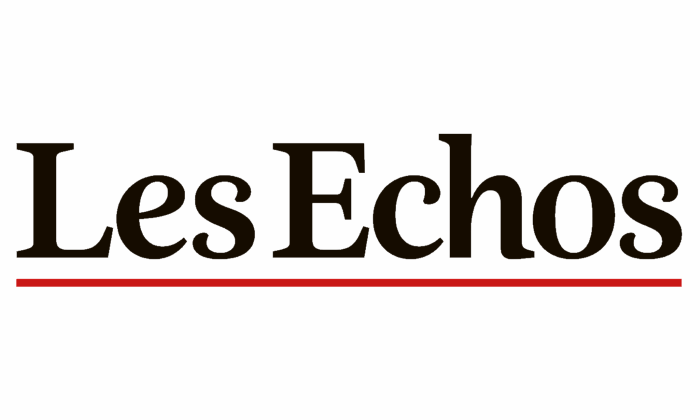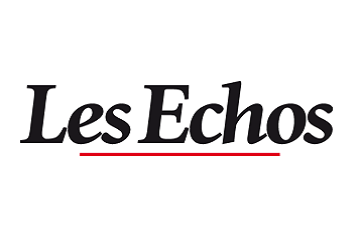Throughout the ages, developments in capitalism have brought about a number of different forms of corporate governance and structure which have overlapped and coexisted in the past, and continue to do so. But at each stage, certain forms have always been able to dominate. During the 19th and early 20th centuries, the countries of the West were dominated by so-called “family” capitalism, through which capital-owning families held power.
From the middle of the 20th century to the 1980s, this was succeeded by “managerial” capitalism, characterised by power being taken over by the corporate technostructure. The power of shareholding families was diluted, their shares having been partly or wholly sold off by successive generations, or the capital increased in order to deal with business development challenges by making use of “anonymous” shareholders.
In exchange for the liquidity of their capital and the possibility of increasing the value of their shares over the long term, such shareholders more or less willingly ceded their decision-making power to professional managers without any capital interest. The 80s marked the return of shareholder power within companies, although not specifically family-held, which once again aligned managers’ interests with those of the shareholders. Accordingly, to counteract the trend during the preceding period which paid too little attention to shareholders’ interests, various methods were employed to ensure that managers’ real objective was not to increase their own power and/or security, but shareholder return. Since the 2000s and their repeated crises, the question arises as to whether the 21st century will see the birth of a capitalism based on partnership capable of acting in the interests of shareholders, customers, employees and society as a whole.
These successive forms of capitalism, each replaced in turn for objective reasons, are associated with specific corporate structures. They provide an appropriate prism through which the company of the 21st century may be viewed.
Two questions must be answered:
- Which forces drive the transition from shareholder capitalism to partnership capitalism?
- To the extent that each form of capitalism results in a specific structure, which new corporate structures will lead to partnership capitalism?
By virtue of its excesses, notably during the 1990s and 2000s, shareholder capitalism helped lead to upheaval accompanied by major financial and economic crises as the excessive demands of ROE (Return On Equity) became unsustainable. Questionable creative accounting practices arose alongside high levels of both household and corporate debt, an accelerated pace of construction and deconstruction of groups of companies or of individual companies, LBOs, LBOs of LBOs… But also an ever higher proportion of profits to dividends to ensure shareholder return. And frequently transferring risk to employees.
The partial failure of shareholder capitalism is obviously the first force likely to lead to partnership capitalism. But public opinion in favour of greater morality in the economy remains an insufficient argument on which to base the transition to partnership capitalism which places greater emphasis on the interests of customers, employees and the company, alongside those of the shareholder. Each major crisis is accompanied by a resurgence in morality. Yet the crisis phase is followed by a sort of blindness to the disaster and the progressive repression of its causes. And events once again take up their previous course. The fact alone of the occurrence of a crisis in shareholder capitalism does not seem to be sufficient to explain and understand the appearance of partnership capitalism, although it constitutes an undeniable factor.
A number of fundamental and enduring forces appear to me to lay behind the transition. The first of these, which gives rise to the others, is the technological revolution.
It has first of all brought about a commercial revolution which is transforming relationships between producers, distributors and customers. Customers have seen their power increase significantly as they enjoy greater freedom of action, are better informed, have more data, are able to compare prices and therefore have greater freedom of choice. The customer therefore obviously becomes the focus of interest for companies. This is why many companies have for some time been developing a customeroriented approach, as though it is a completely new idea.
Power relationships have accordingly been turned around in favour of the customer. Yet in many economic sectors, this phenomenon is also perceptible between producers and distributors, whose position has been strengthened. The transfer of power to the customer has put an end to the traditional hierarchy born in the 20th century based on the ability of the producer to impose its products on selected distributors and on that of the distributor to impose the very same products on consumers.
It is now the customer who holds the power. Accordingly, if the distributor has a good understanding of their customer, if they know how to use their “big data”, if they develop effective CRM (Customer Relationship Management), if they are therefore able to anticipate and fulfil individual customer needs, if they finally consider the customer to be an “active consumer” capable of joining in the process of researching the right combination of products and services, then the distributor will be able to find the right solutions for each individual customer and retain their loyalty. Service even takes precedence over the product itself. We are no longer in an economy centred primarily on the product, but a world in which utilisation and service are becoming more important than ownership of the product itself.
For example, applications are more important than the telephone itself. Bicycles can be hired for individual journeys and even the car is going down the same route. The Cloud is progressively rendering ownership of large computers obsolete… The quality of the relationship with the salesperson or advisor and the ability to find individually tailored solutions, in other words good service, are taking the place of the product as such. This being the case, the distributor is therefore able to hold power over the producer by introducing competition from other producers to find the right combination in terms of both price and quality of products and services which best meet the needs of the individual customer.
A transformation of the historical forces is therefore currently emerging in numerous sectors between producers, distributors and consumers. This evidently requires excellent customer management on the part of the distributor. But the distributor will be severely undermined if it is not able to understand customers and obtain their loyalty, all the more as it is now possible for the producer to sell directly. Poor quality of advice and the inability to offer better combinations of products and services tailored to the individual will directly lead to the complete automation of the customer-supplier relationship and the disappearance of the economic role of the distributor. With the emergence of a direct producer-client relationship, wherever this is feasible, or with the emergence of web-based pure-play distributors, low-cost customer relations are formed.
The technological revolution also brings changes in employee behaviour which place them at the centre of the company, with organisational implications. Vertical hierarchies are now increasingly less acceptable and much less relevant. Today managers can no longer be credible and lead their employees if their authority is not based on the value they bring to their teams, as opposed to being a repository for information which is nowadays freely available, circulating throughout the company. It is therefore no longer possible to be a manager by exclusively relying on your position within the hierarchy.
At the same time employees expect greater autonomy, sustained and enhanced by the technological revolution, which poses the question of entrepreneurship within the confines of the company itself. Developing the spirit of initiative has become a major issue for large companies, even though in essence they reduce it to a bare minimum by virtue of the organisational structure itself. Today individual employees aspire to understand the nature of their contribution to the company, they want to buy into the strategy and the chosen organisational structure in order to be able to share the corporate vision. It is vital that management takes account of such aspirations.
Moreover, very hierarchical and vertical organisations which emerged during the managerial capitalism and dominant technostructure phase have become much less effective and much more difficult to manage:
- They are less effective at mobilising employee resources as managerial proximity is now more crucial than ever;
- They are more rigid and less flexible, no longer in step with an increasingly complex world and environment. Increasing complexity and more numerous and more intense exterior shocks demand greater flexibility from organisations, just as with individual and team autonomy, in order to be able to react promptly and to skilfully manage dysfunctionality and effectively adapt to the new reality.
Nowadays, size and centralisation result in entropy. Conversely, companies organised in networks spanning the various parts of the company or different companies are more adaptable, more effective. The centralisation/decentralisation equation is now increasingly tipping in favour of decentralisation.
Furthermore, with the commercial relationship becoming of central importance, the organisation must be fully oriented towards the customer, from production to sales, from front office to back office. The development of sales staff skills in order to enhance their ability to manage customer relationships and to provide them with greater autonomy, enabling them to be proactive with each and every customer, is now becoming imperative, the objective being that all sales employees should find themselves in an entrepreneurial situation, managing and enhancing the value of the assets entrusted to them, and with the necessary tools and responsibilities. And consequently with greater job satisfaction and the ability to get results.
Greater managerial proximity, a better understanding of customer expectations, openness to an entrepreneurial working mode, a high capacity to absorb shocks, changes and complexity; such are the ingredients for the company of tomorrow.
Should greater emphasis be placed on the technological revolution which now more than ever requires managers to consider their company’s reputation, and the aspirations of society as a whole, as it has become impossible to operate without comments permanently appearing on the Internet about what the company is and does? Or about its environmental impact, or the quality of its products and services…? The social factor must therefore be treated very seriously with society becoming a genuine stakeholder in the company.
Effectively, all companies are biological organisms and, like all biological organisms, live in a state of permanent compromise, striking an unstable balance between order, verticality, uniform management routines and, on the other side of the equation, individual autonomy, initiative, the need for entrepreneurship… The balance is currently tipping clearly in favour of the second part of the equation, to the detriment of the first, even though elements of both are indispensable.
In conclusion, the transition to partnership capitalism requires the modification of corporate structure and reserves a place of honour alongside shareholders for customers, employees and society. Happily this is not only due to the failure of the previous mode of governance and corporate structure and to a temporary resurgence of morality, but to a commercial, behavioural and managerial revolution, itself based on technological developments. These are very powerful, enduring and dispassionate forces which, it can only be hoped, will lead to this new form of capitalism.
Donwload «The company of the 21st century» (PDF)
Read in french «L’entreprise du XXIe siècle»



